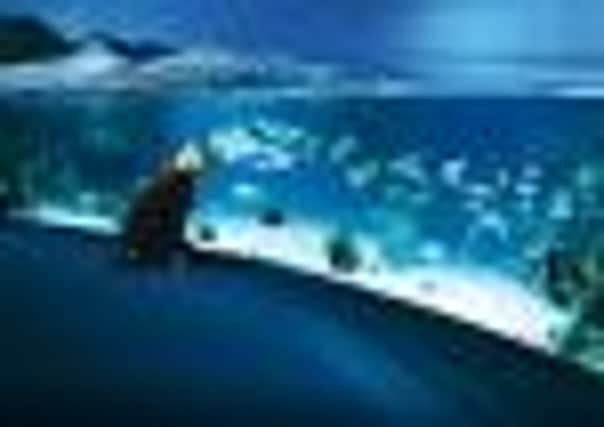Travel: La Rochelle, France


There is a buzz in the air, but you won't hear any car engines as it’s the city’s annual car-free day. Perhaps best known to us as the setting for the top-selling French textbook Tricolore, the sunny seaport, on the west coast of France, is a popular holiday destination. The capital of Charente-Maritime and part of the Poitou-Charentes region, La Rochelle takes its environmental responsibilities seriously, however, and today’s banning of cars isn’t a one-off gesture. During summer months, car access to the heart of the city is regularly restricted. But there are plenty of alternatives.
Thanks to 150km of cycle tracks, cycling is a popular choice for residents and visitors – the bright yellow municipal bicycles you see around the city are available for hire, free for the first two hours. There are also plenty of electric car hire points, and the ferry between Vieux Port and Les Minimes, one of Europe’s largest yachting marinas, is solar-powered.
Advertisement
Hide AdWe’ve come to the city the low-carbon way, by train. An electric car picks us up from the station and takes us to Un Hotel en Ville, a charming boutique hotel in a quiet, leafy square, a stone’s throw from the quayside.


An impressive mix of gothic and renaissance architecture has resulted from the city's past prosperity, perfectly illustrated by the town hall. And the maze of pedestrianised streets and vaulted stone arcades that house little shops make it a wonderful city to discover on foot. Yet you never feel far from the sea. At the Place du Marche, market stalls creak under the weight of seafood. I spot some Scottish salmon and our guide Didier explains that the people of La Rochelle have great taste. We have lunch at Café du Nord, by the marina, where we eat moules frites and steak tartare. Mindful of our afternoon with sailing company Yakapartir, I don’t eat much – but I needn’t have worried as there's a barely a breeze so we just sit back and enjoy the coastal views.
Back on dry land, the aquarium offers a bit more excitement. One of Europe’s largest, with 10,000 marine creatures from the Atlantic, Mediterranean and the tropics, it has no shortage of ‘wow’ moments – including the shark tank, which contains 1.5 million litres of sea water and 20 menacing sharks. Conscious of its gas-guzzling tendencies, there are programmes to minimise its carbon footprint as well as educating visitors about the fragile aquatic world.
There’s plenty of seafood on the menu at the beautiful conservatory-fronted restaurant Les Quatres Sergents, and our epic yet delicious seven-course meal starts with farmed sea urchin. I'm surprised how little flesh there is in the spiny sea hedgehog, and it’s sweeter than I expect too. The culinary delights that follow include sea bass, squid, duck, cheese and some delicious sweet dishes.
Due to the extensive network of cycle paths and a lack of hills, cycling here appeals to all abilities. And there’s no better place to get on your bike than on the nearby island of Ile de Re. Reached by a modern curving bridge, the island is 30km long and 5km wide, and home to pretty ports and beautiful sandy beaches. With an eye on preserving the natural environment, much of it is protected, but the signposted cycle paths take you off the beaten track past salt marshes, vineyards, oyster farms and pine forests. There are towns dotted around the island, all picture-postcard with white-washed walls, pastel-painted shutters and wonderfully tall hollyhocks, while the western headland is punctuated by the magnificent Phare de Baleines lighthouse.
We’re staying at the eco-friendly three-star Le Peu Breton, near Ste-Marie-de-Re. This charming family-run property has the European eco-label certificate and is one of three such hotels on the island. Top green practices include using LED bulbs, a system to reduce water-consumption and eco-friendly toiletries. The 29 bedrooms have a stylish nautical theme, and there’s a heated pool.
Advertisement
Hide AdThe capital of the island is St-Martin-de-Re, built around a beautiful harbour. Its Vauban citadel and star-shaped ramparts have gained it Unesco World Heritage status, and while walking them you may come across some shaggy-haired donkeys dressed in stripy trousers. Now paraded for tourists, they hark back to the 19th-century, when they worked the salt marshes – the trousers to protect their legs from the salt and bugs. I’m happier to saddle up at riding school Les Ecuries du Moulin Moreau, and our route takes us through fern-carpeted pine forest – Ile de Re means ‘isle of ferns’ – and past the school’s organic veggie garden, where they play classical music to the tomatoes to encourage them to grow.
A French proverb says, ‘Appetite comes with eating; the more one has, the more one would have’. Whoever first said this must have come from these parts. I feel I’ve spent the whole trip eating so jump at the chance to cycle to the picturesque town of La Flotte. It’s not far but I peddle with gusto. We peruse the medieval market in the heart of the pedestrianised streets before heading back to the hotel.
Advertisement
Hide AdBut all the exertion has made me hungry. I wonder what’s for lunch.
• Return rail fares from London to La Rochelle start at £108 in standard class. All prices are per person and subject to availability. For bookings, visit www.raileurope.co.uk or call 0844 848 4070.
Atout France, the France Tourism Development Agency, France information line (09068 244123, www.uk.franceguide.com).
Double rooms cost from €70 to €80 a night at Un Hotel en Ville, 20 Place du Maréchal Foch, 17000 La Rochelle (www.unhotelenville.fr).
Double rooms cost from €70 to €140 a night at Le Peu Breton, 31, Rue de la Cailletière, La Noue, 17740 Sainte Marie de Ré (www.hotellepeubreton.com).
This trip to La Rochelle was sponsored by the regional tourist board of Poitou-Charentes (www.holidays-france-atlantic.com).